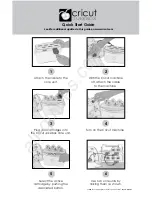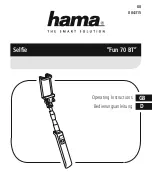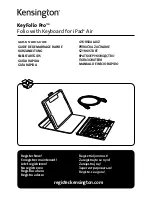
ENGLISH |
115
IMPORTANT SAFETY INSTRUCTIONS
WARNING NOTICE - FOR THE SAFETY OF PER-
SONS, IT IS IMPORTANT TO FOLLOW THESE IN-
STRUCTIONS
THESE INSTRUCTIONS ARE TO BE KEPT
∙
WARNING! Working at high altitudes bears the risk
of falling. Always wear appropriate fall protection.
∙
If the awning needs to be installed at higher levels
that require the use of ropes, make sure the awn-
ing is:
-
taken out of its packaging,
-
the ropes are suitable to carry the load and fixed
in a way that they cannot slip,
-
the awning is lifted evenly and horizontally.
The same applies to the dismantling of the awning.
∙
Ladders and scaffolding may not be positioned
against or attached to the awning. A firm footing
and level ground is necessary for their support.
Only use ladders and scaffolding with a sufficiently
high load-bearing capacity.
∙
At first use, make sure that no person or animal is
present in the extraction area of the awning. Check
if the fastenings and mounting brackets are still
tight after the first extraction.
∙
Use the awning only as specified in the intended
use. Changes such as additions or conversions
that are not provided by the manufacturer, may be
made only with the written consent of the manu-
facturer.
∙
Ensure that children and persons who cannot cor-
rectly assess the dangers of improper use and mis-
use, do not operate the awning. Awnings in need
of repair, with high wear or damage to the cover or
frame, may not be used.
∙
Prior to each operation, visually check the awning
for damages. If damage is visible, stop using the
awning immediately and seek for authorized per-
sonnel to repair the damage.
∙
Do not touch moving parts during operation.
∙
There is the potential of crushing, squashing and
cutting between front profile, articulated arms,
moving profiles and the housing, especially when
operating the awning with automatic controls.
Prevent clothing or body parts from getting caught
and drawn-in by the awning.
∙
When working in the extraction area of the awning,
make sure that it cannot be operated accidentally.
Therefore remove the hand crank and store it in a
safe place or switch off the power supply for the
system and take safety precautions against unin-
tended reactivation.
∙
The use of tensioning cables or additional load
(e.g. hanging objects to the awning) can cause
serious damage or crash to the awning and are not
permitted.
∙
Foliage or other foreign objects on the awning
cloth, the top cover and in the guide rails must
be removed immediately, as they can damage or
crash the awning.
∙
Retract the awning during rain, snow or wind to
avoid damage. If a wind sensor is used in combina-
tion with an electric drive, set it according to the
wind resistance class of your awning.
∙
Do not extend the awning during snow or frost
(danger of frozen fabric). Snow and/or ice can de-
stroy the awning. Automatic controls must be set
to manual operation under such conditions, e.g.
winter operation.
∙
Only use manufacturer-approved replacement
parts.
∙
When dismantling and disposing of the awning,
the prestressed parts (e.g. articulated arms, back
pull systems) must be completely relaxed or se-
cured to prevent accidental deployment.














































